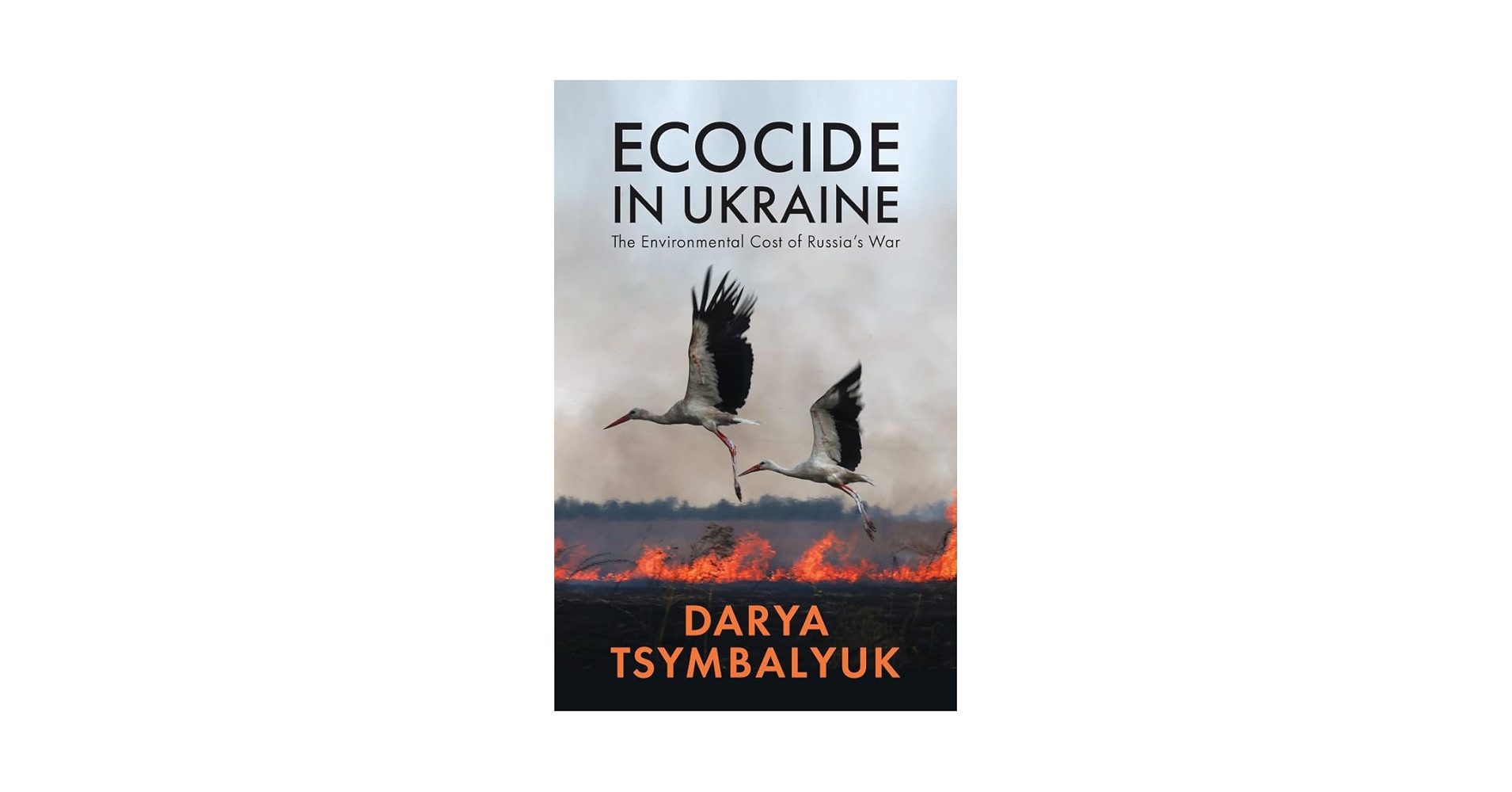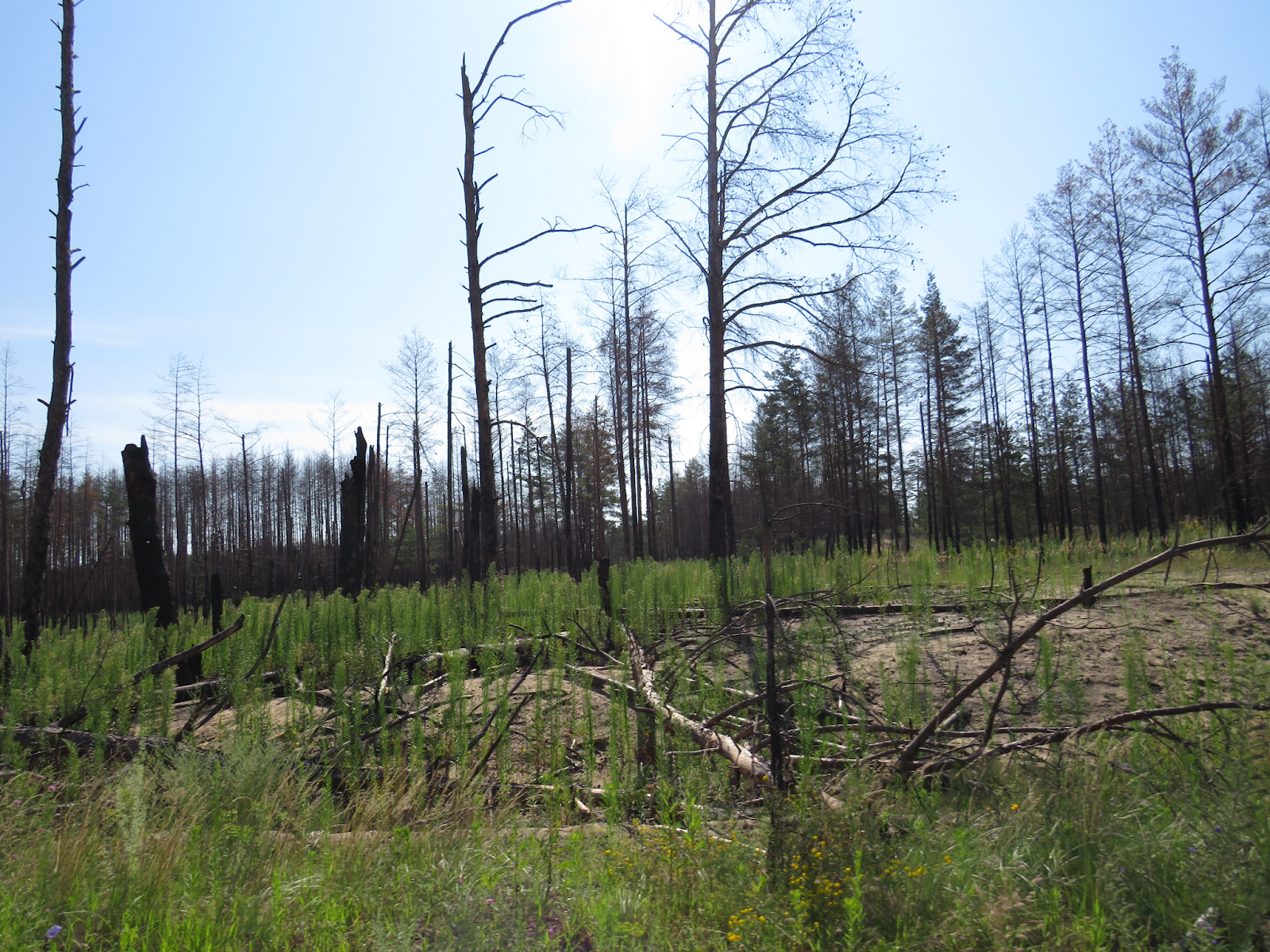Alexander Vorbrugg
Ecocide in Ukraine is an outstanding testimony to the environmental costs of Russia’s war, a moving tribute to humans, ecosystems, animals, and plants in Ukraine, and a thoughtful reflection on the various ways they and their inter-relationships are affected during the war. Tracing ecocide in the “most intimate and everyday realities”, Darya Tsymbalyuk sheds light on the war’s complex impacts on various aspects of life.
The book takes the reader on a journey across Ukraine’s rich and diverse landscapes, with a particular focus on the country’s south and its steppes, rivers and coasts. We learn about unique species and ecosystems, environmental sciences and arts and environmental movements and organizations. The book avoids romanticizing the state of environmental affairs before Russia’s 2014 invasion and full-scale 2022 war. Tsymbalyuk recalls the lengthy history of ecocidal and genocidal wars “that have ravaged the lands of Ukraine and the lives of its diverse inhabitants” as well as the history of environmental neglect and degradation caused by polluting industries, industrial agriculture, dams and other large infrastructure projects (issues that have accelerated since the Soviet era) and the impacts of market capitalism.
Chapters visit different sites of destruction and resilience as indicated in their headings: “Water”, “Zemlia” (land/soil in Ukrainian), “Air”, “Plants”, “Bodies”, “Energy”. Each chapter describes a complex and interconnected world affected in complex and interrelated ways. In “Zemlia”, Tsymbalyuk writes:
“In times of war, soil and land ask deeply existential questions. Land lies at the center of experiences of war and occupation. [T]he violence of occupation, the displacement of people and other species, as well as the contamination and destruction of soil exposes the life connections of people and other living creatures to land as a shelter, a home, and a living world”.
In this spirit, the book tells stories grounded in cohabitation and the partially shared experience of the war; stories of bodily existence and fragility that one must consider to better understand how attacks on various environments and infrastructures, from soils to energy, are simultaneously attacks on the bodies that depend on them. It demonstrates how war reveals vulnerabilities and dependencies shared, to some degree, by humans and animals exposed to the same land mines, rockets, and floods. Tsymbalyuk also traces new examples of solidarity and cooperation between humans and other creatures that emerge in the face of these threats.
The book covers an impressive range of issues. What stands out more than its scope, however, is how it narrates these issues, connects them, and proposes new ways of understanding them. More than focusing on the juridical aspects or scientific facts of ecocide, Tsymbalyuk sets out to track “how experiences of witnessing and living through ecocide change one’s understanding of environments and one’s home(land)”. One concept central to this is what Tsymbalyuk calls the “episteme of death”, which “becomes the dominant morbid frame of learning about one’s homeland, when we only find out about the existence of someone or something when they are gone”. Tsymbalyuk reflects on how this morbid frame of learning became central to how she noticed, researched, documented and related to the living worlds threatened by the war, but also identifies it in the stories of others, in the work of researchers and artists and on social media. While death links “everything and everyone” in war, the episteme of death is at the same time an episteme of life because, as the book demonstrates, it creates new kinds of attention to aspects of life and to the existence of species or parts of nature that most people didn’t notice earlier.
The author’s narrative is deeply personal and place-based, informed by experience, remote and near research, and commitment to the lives and worlds she describes. The book also witnesses stories on the ground, scientists’ measurements, historians’ and artists’ works, and clips shared and re-interpreted on social media and woven into multi-layered accounts that reflect the complexity of their subjects and connection. The book is populated by many heroines and heroes with names, characters and their own ways of relating, residents and workers, soldiers and rescue workers, experts and nature stewards, animals and plants.
Although Tsymbalyuk’s writing is dedicated to conveying the war’s cruel violence and pain, she nevertheless connects to humans and other creatures with a sense of love, concern and curiosity and maintains ease and clarity. The book asks many questions that reveal new perspectives. How does a bird flying over war-torn lands perceive what they see? What does a military pilot see while dropping the bombs that cause this destruction? Combining carefully researched analysis with more anecdotes and questions, it provides a wealth of insights and new understanding while acknowledging that it is “impossible to make sense of war”, provide a complete picture, or fully grasp what it means to live through it. This is writing with and against the limits of comprehension, approaching again and again, and in different ways, what at some level inevitably remains impossible to comprehend. Tsymbalyuk’s writing is poetic, adding depth and, in some sense, even clarity to interpretation and analysis.
The book relates to several broader debates and makes original conceptual contributions. It connects the story of ongoing environmental degradation to the history of Soviet extractivism. While focused on intimate and everyday realities, it also speaks to the planet’s overall environmental condition and links the war to the climate crisis. Tsymbalyuk touches upon the debates of imperialism and colonialism, ecocide and genocide, and post-war recovery. Further, she theorizes on the interconnectedness of violence, space and time, exploring how some temporalities implode and spatial patterns collapse while new connections emerge.
Ecocide in Ukraine demonstrates that an environmental lens is necessary to “begin to comprehend the scale and anguish of the devastation, the loss of whole worlds”. It is an account that remains necessarily unfinished as Russia continues to wage war. The war’s environmental impacts will prevail long after fighting has stopped, and, as the book shows, there are so many ways of addressing the subject and so many stories to be told.
Tsymbalyuk offers inspiration, sense of place, and an invitation to continue such engagement into the future. To a general readership interested in the topic, this book provides a comprehensive, timely and highly accessible overview of environmental issues in present-day wartime Ukraine. Experts will be inspired by her weaving of a wide range of sources and stories into original interpretations. An outspoken account of a brutal war, Tsymbalyuk also tells invigorating stories of beauty, love, commitment, and dignity in defiance of violence. Her sincere appreciation gives hope for the living world alongside the life and work of the environmentalists, soldiers, residents and the many non-human characters and companions as they together endure, defend and create.
Tsymbalyuk, Darya (2025): Ecocide in Ukraine. The Environmental Cost of Russia’s War: Polity. ISBN: 978-1-509-56250-3







